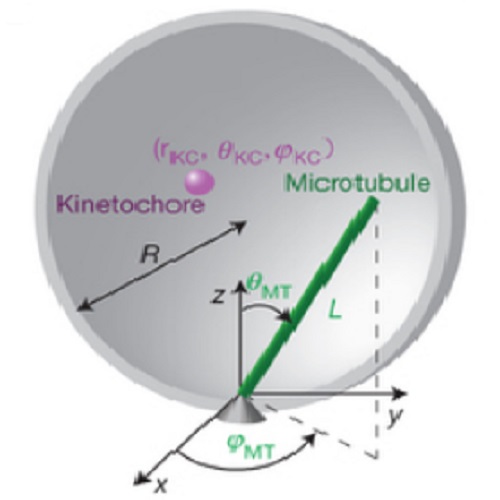Pivoting of microtubules around the spindle pole accelerates kinetochore capture.
During cell division, spindle microtubules attach to chromosomes through kinetochores, protein complexes on the chromosome. The central question is how microtubules find kinetochores. According to the pioneering idea termed search-and-capture, numerous microtubules grow from a centrosome in all directions and by chance capture kinetochores. The efficiency of search-and-capture can be improved by a bias in microtubule growth towards the kinetochores, by nucleation of microtubules at the kinetochores and at spindle microtubules, by kinetochore movement, or by a combination of these processes. Here we show in fission yeast that kinetochores are captured by microtubules pivoting around the spindle pole, instead of growing towards the kinetochores. This pivoting motion of microtubules is random and independent of ATP-driven motor activity. By introducing a theoretical model, we show that the measured random movement of microtubules and kinetochores is sufficient to explain the process of kinetochore capture. Our theory predicts that the speed of capture depends mainly on how fast microtubules pivot, which was confirmed experimentally by speeding up and slowing down microtubule pivoting. Thus, pivoting motion allows microtubules to explore space laterally, as they search for targets such as kinetochores.

- Nat. Cell Biol. 2013 Jan 09;15(1):82-7
- 2013
- Cell Biology
- 23222841
- PubMed
Enabled by:
